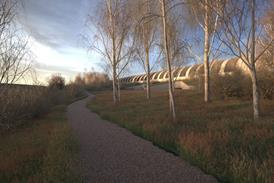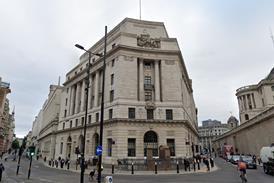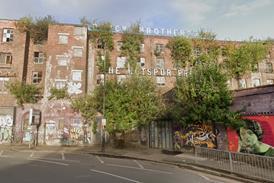Has the centrality of two-dimensional representation in the built envirionment professions had its day, asks Anna Beckett

When was the last time you looked at a map? Not your phone or a satnav but an actual paper map. A map where there’s no little blue dot and you have to consider your surroundings to work out where you are? Unless you’re a keen hiker or a cartographer, it’s probably been a while. But not so long ago reading a map was an essential skill; I learnt to drive without a satnav and when I first moved to London I had an A to Z to find my way around.
As we rely on our phones and satnavs more and more, being able to read a map isn’t a skill that we need. After all, a map was a tool that we invented to help us solve a problem, and we have other ways of solving those problems now. But are there other skills that come from reading a map that we do need, particularly in the construction industry? Does reading a map actually give us a better spatial awareness? Does it help us to understand other 2D representations such as construction drawings?
And if we’re losing those skills, does it matter? We work in 3D more now anyway, so will there come a time when 2D drawings are also obsolete? Will working in 3D help us to develop a different kind of spatial understanding? Will we replace those skills with something even better?
As an industry, we’re not the quickest to adapt. It’s taken more than 10 years for the use of 3D modelling software to become the default. Even now, that model might not be used by the whole design team and sometimes it isn’t used on site at all. We have software which has huge capability to help to move our industry forward, but we’re still waiting for everyone to catch up.
It’s inevitable that as technology changes then the way we perceive the world around us will change too
Producing a 3D model is just the start; we have the technology to create digital twins of the buildings we’re designing, allowing real time data to assist during construction as well as during the building’s lifetime. We are starting to use AI to optimise design and improve performance, helping us to design buildings more safely and efficiently. And when it comes to sustainability, AI offers huge opportunities to process data quickly and learn from it, accelerating our journey towards lower carbon construction.
But to make the most of those tools we need to be willing to adapt. We need to be able to reconsider the ways that we are working throughout the industry and accept that we might need to do things differently. And we need to understand that while graduates joining the industry may not have the skills to understand the ways we used to work, they might have the skills we need to move the industry forward.
It’s inevitable that as technology changes then the way we perceive the world around us will change too, and it’s important that we understand the impact that those changes are having. We need to recognise that the skills we need are evolving, and make sure that we acknowledge the gaps that might be left behind. We need to accept that AI has a place in the construction industry, and while there’s still plenty of value in the ways we used to work, technology can help us to put our skills to better use. And maybe, eventually, we have to let go of those 2D drawings…
Postscript
Anna Beckett is an associate director at Buro Happold
















1 Readers' comment